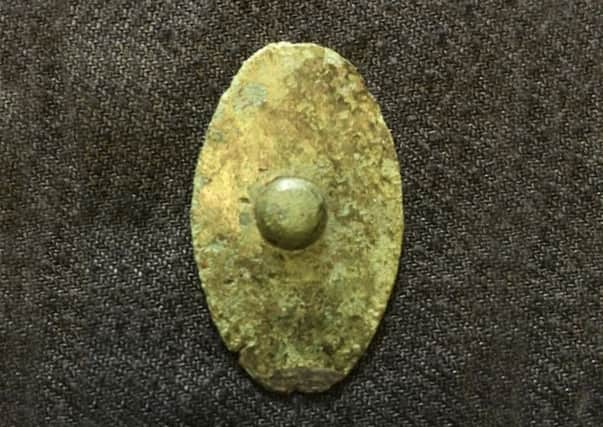Bronze shield is example of high quality Iron Age craftsmanship


Iron Age shields were one of the icons of the barbarians of the north: seen by the Romans as war-obsessed tribes worthy of conquering. The reality was of course somewhat different – these were farming communities, living in roundhouses, with extensive stock (cattle, sheep, pigs) and some arable.
They were gifted smiths, capable in East and North Yorkshire of producing some of the most beautiful weaponry known from Iron Age Britain (spears, swords in decorated scabbards), jewellery (glass-bead necklaces, bracelets and brooches), as well as the chariots for which this area is famous.
Advertisement
Hide AdAdvertisement
Hide AdIn this landscape, they buried their dead in square barrows with great ceremony, and some of their most spectacular graves included shields. These were made of a variety of different wood species, perhaps selected not just for hardness and shock resistance but also colour and grain, and often adorned with bosses, discs and plaques of bronze, incised with Celtic art or inset with red glass.
All too often we dismiss these as merely defensive objects, recognising them as a powerful symbol of protection. Beautiful solid bronze versions have been found in the Rivers Thames and Witham. Yet as historical re-enactors and our own police would attest, a shield can be used to pin down and immobilise a foe, and turned on its side, a hardened or bound rim edge can prove remarkably sharp!
When we see this miniature version we should perhaps have more respect for the violence it was capable of in the right hands.
Its size is also deceptive: by making something in miniature, the smith was showing off their skill. Yet they were also compressing the power of the real, full-size version into something tiny: making something magical in this miniaturised replica. Was it a toy, a charm or amulet? An offering to the gods or a thanksgiving for a victory? We will never know. Such miniature shields are rare, being found in just a handful of sites, usually in hoards or shrines, dating to the late Iron Age and early Roman era. This one was found at Lady’s Spring, near two chalk figurines which can also be seen in Malton Museum.
Advertisement
Hide AdAdvertisement
Hide AdThese small tablets of chalk represent the warriors themselves, with straight lines representing swords carved into their backs and bands of herringbone incisions that conjure beautifully woven cloaks and tunics. Gazing into the case, you cannot help but be enchanted by these miniature marvels, which still hold an air of mystery about them.
l You can see the chalk figurines on display in the museum which is open Thursday-Saturday 10am–4pm and is free entry.
The museum was founded in the 1930s and after a period of closure in 2013 it reopened its doors in February 2014 based in the Subscription Rooms in Yorkersgate with the support from Ryedale District Council, Fitzwilliam Estate, and the Milton Rooms.
The museum collection contains archaeological material and social history, including items of national significance. Its most popular pieces are a jet bear found in Malton, a Roman roof tile containing a child’s footprint, and boots and saddle from horse trainer and breeder Sir Guy Cunard.
The museum attracts a broad range of visitors from its locality to visitors from as far as Australia, USA, New Zealand and across Europe.